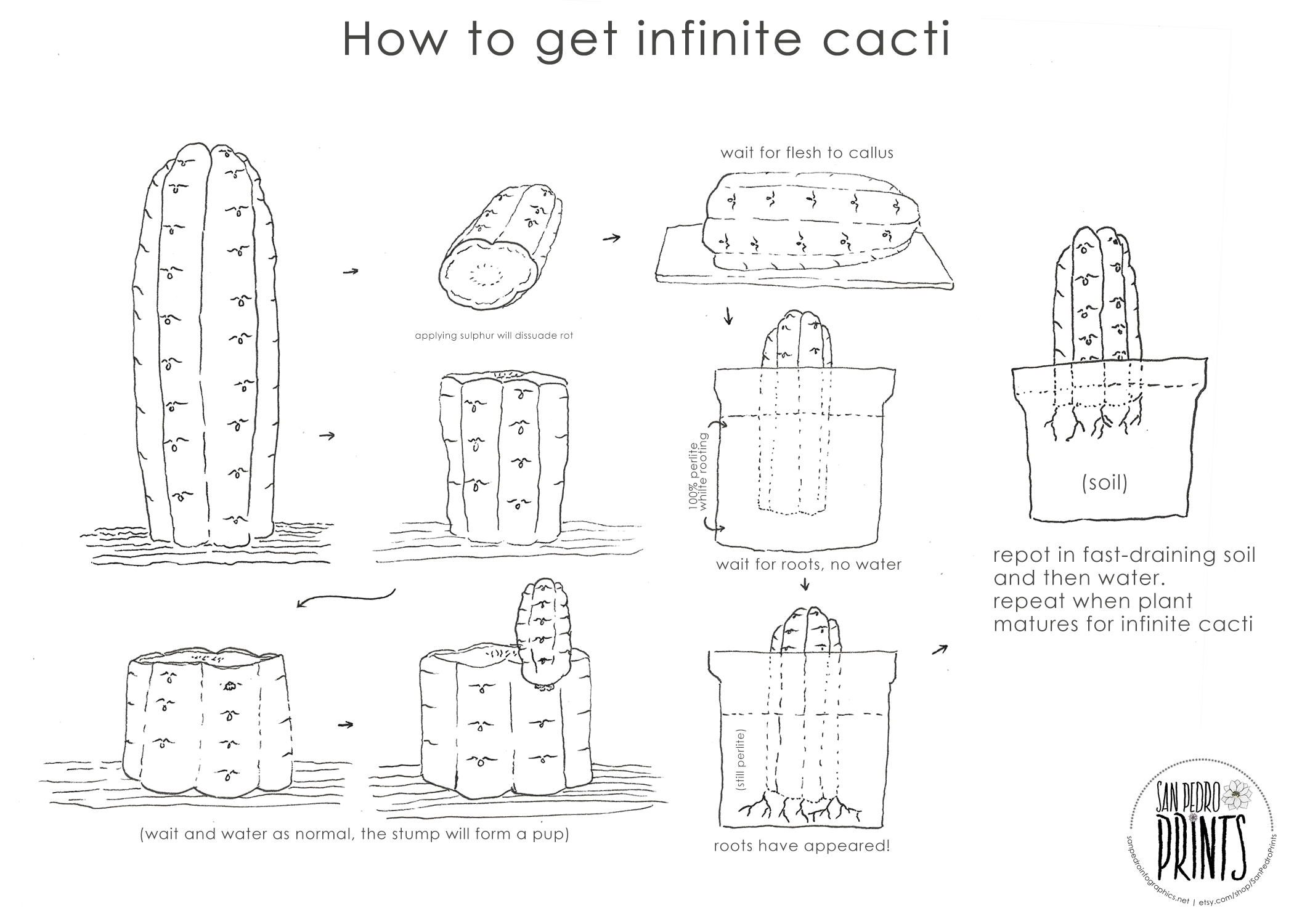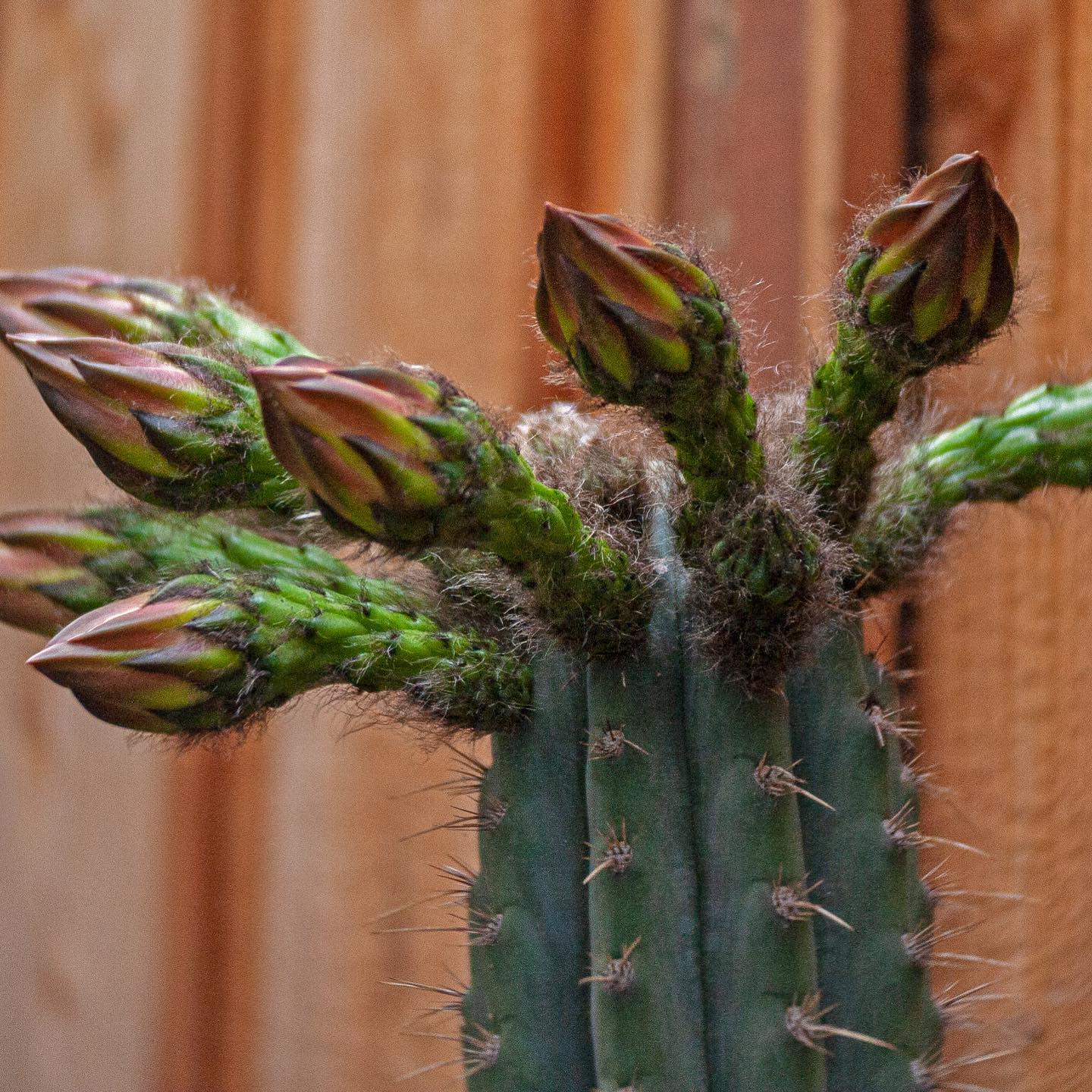Propagating and Rooting cacti

One of the first things that drew me to cacti was their ability to be cut and turn into a new cactus. There are many different ways to propagate cacti, and if you have one healthy cactus, you have unlimited (time dependant).

As this graphic shows, starting from the top left moving to the right, the top of the cactus can be chopped off clean. San pedro cacti will show an off-white inner flesh with a vascular ring in the middle. That part can be pretty tough on more mature specimen, and I like to use a clean serated knife for a larger, older specimen, and a clean razor-sharp knife my father made for smaller ones
Dusting the flesh with sulphur (sulfur in the US) will help it dry, and prevent rot. This is highly advisable, I got mine at Lowes in the US. Take a look at the picture in the PC post to see what can happen otherwise, you'll see it's starting to form some rot (but it'll be fine I have pleanty of sulphur)
Where it says wait for flesh to callus, do exactly what it says, wait. If you don't wait long enough and there's no callus, it will rot. 2 weeks to a month on a shelf out of direct sunlight seems to do the trick for me. A good way to test is to tap the callus with a fingernail. If it doesn't break, you're good, if it's thin and breaks, revealing the flesh, wait longer.
Just below this image you'll see a cactus sitting in a pot. That pot is full of 100% perlite and nothing else, which is why it is so deep. You actually can plant your cactus this deep in dry soil and it will root, but it's a waste as it will also cork the flesh that could have otherwise provided photosynthesis. I had many concerned commenters when I first posted this graphic on Reddit saying that you'll absolutely rot it if you plant it this deep in soil. That's not the case, however, I still wouldn't advise it.
Again, using 100% perlite (very cheap at any hardware or gardening store) place it deep enough it can stand upright. It also seems as though darkness has an effect on rooting and as perlite is very light, the extra depth should keep the area that will root nice and dark.
No water is needed, the plant will use its own water and energy to form roots. Large mature cuts have a lot of energy stored in them, and can root and pup very quickly. I have received cuts in the mail that started rooting on the way. The cactus blades will thin as it uses this energy, no need to fret, still wait.
Once the roots have appeared, you can repot the cactus in soil. Try to put only around an inch of cactus under the soil leaving as much as you can of the green flesh to be exposed. This will give more surface area to photosynthesize. I like to use 1/2 perlite 1/2 cactus/citrus soil. It can be helpful to use chopsticks or other dowels to help keep the plant upright while its roots spread.
Starting back at the top left and working down, the simplest version of this process takes place. The left-over stump from the cutting will form a new cactus (referred to as a pup). The pups tend to form from one of the top areola. San Pedro cactus (trichocereus pachanoi, peruvianus, clones crosses and cousins) can also put out basal pups, forming from beneath the soil and ascending upward.
The pup can be left as is and will use the growth potential of the root structure and stump to grow, it can also be removed and rooted, and the stump will put out another pup.


.jpg)